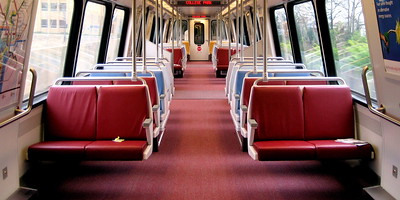Press Statement
For Immediate Release
October 3, 2018
Contact:
Stewart Schwartz, 703-599-6437 (c)
Aimee Custis, 202-431-7185 (c)
WASHINGTON, D.C. — On Sun., Sept. 30, 2018, the Washington Post ran a story detailing the failure of the Washington Metropolitan Transit Authority board members to commit to increasing Metrorail service.
In Sunday’s Post story, the elected and appointed officials charged with the stewardship of our region’s rail and bus system refused to say that they would unite as a body to run more trains, more often, in order to increase ridership. Such a move would follow the demands of riders, the recommendations of consultants, and well-known industry best practices.
National Transit Database data show that Metrorail ridership is down about 25 percent from a decade ago. Five of the past 12 months have set new record lows.
“We know this is primarily due to unreliable service and unreasonable wait times for trains,” says Stewart Schwartz, executive director of the Coalition for Smarter Growth. Schwartz continues, “These long wait times, especially during nights and weekends, have made other modes of transportation, like biking and ride-hailing, more attractive and more realistic to use than Metrorail.”
Schwartz says, “WMATA’s own consultants, hired to study declining ridership, have made clear to WMATA what has been intuitive to its customers for years: while there is increased competition from ridesharing services, low gas prices, and telecommuting, the primary cause of Metro’s ridership slide is reduced frequency, and especially reduced off-peak frequency on evenings and weekends.”
In his comments to the Post, board member Christian Dorsey did identify the need for “more service generally,” and “less disruption in service through closings and maintenance activities,” including during off-peak hours. But advocates say that taken in total, the WMATA board’s comments to the Post show Metro’s board pursuing goals that do not align with the realities of how transit works for the people who use it. As has been shown time and again, frequent, reliable service is the most important factor in attracting and retaining people who ride transit.
Moreover, elected officials in local and state jurisdictions where WMATA operates have not committed to providing the necessary operating funding to make frequent, reliable service possible.
While the Post reported solely on Metrorail, urgent attention must also be paid to Metrobus and other area bus services. A lack of political will to install and enforce dedicated bus lanes or signals — so buses can avoid the congestion of personal cars and move more people — means that bus performance is slowing alongside Metrorail.
“We support frequent, reliable public transit that connects the region. We stand fully behind WMATA when it takes steps to realize that reality,” says Schwartz. “We have worked closely with the agency as it has taken steps toward reform, fought for dedicated bus lanes, and campaigned successfully for its first-ever dedicated capital funding as part of the MetroNow coalition. We fought hard for this with the understanding that reliable financial resources for capital spending would enable WMATA, and its board, to focus on not just restoring, but improving, Metrorail service.
“WMATA’s stewards and elected officials representing the jurisdictions it serves are falling short in protecting the freedom and accessibility that transit service is central to providing to area residents. Frequent and reliable service increases transit ridership. It provides freedom and greater access to jobs and services. We need the board and regional elected officials to commit emphatically to improving service and ridership.”
###
About the Coalition for Smarter Growth
The Coalition for Smarter Growth is the leading organization in the Washington DC region dedicated to making the case for smart growth. Its mission is to promote walkable, inclusive, and transit-oriented communities, and the land use and transportation policies and investments needed to make those communities flourish. Learn more at smartergrowth.net.


